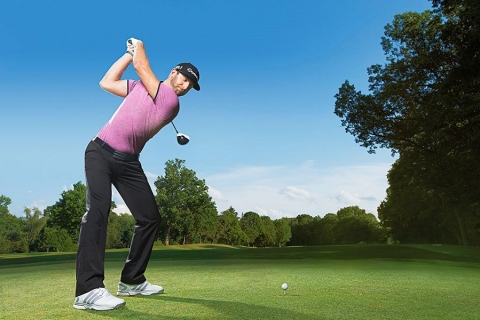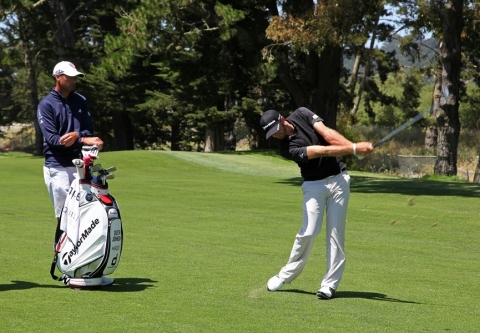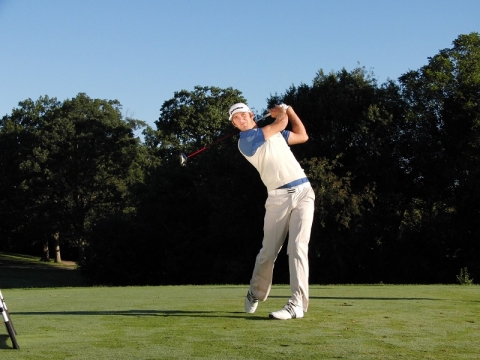The name Dustin Johnson will forever be remembered in golf not only for the player’s great style of play but for the controversy that has permanently surrounded him as well. Leaving everything else aside, it is a shame not to praise this player for his amazing talent just because there are scandals surrounding his name. As anyone who takes up golf as a hobby or who wants to play this sport professionally, you have to learn from the best golfers out there, and Johnson is definitely among them. His power and grace make his one of the best when it comes to his swing, a subject that we will talk about more in the following lines, where we explain exactly how he proceeds.

Stance
Dustin’s stance is, without a doubt, perfect. This is all due to the fact that the player takes a wide position that helps support his shoulders. But this is not something that an amateur can perfectly copy, especially without a lot of practice. Therefore, if you are a newbie, it is best that you narrow the stance a bit, thus reducing the risk of swaying.
Takeaway
During the takeaway, the player keeps his lower body extremely stable, all without pressuring the knees and legs too much. As he goes for the 90-degree shoulder turn, Dustin extends his left arm, his wrists starting to hinge on a plane. After practicing these movements a couple of times, you will probably nail them as well.

Backswing
When Johnson is about three-quarters of the way through the backswing, he fully extends his left arm in width in the swing radius. Meanwhile, he keeps the wrists hinged for the left arm and club shaft to create a 90-degree angle that gives him complete control and an amazing swing power as well.
Full shoulder turn
As he finishes the prior sequence and completes the shoulder turn, the player’s hands stop at the 10:30 position. Due to his impressive 6 ft. 4 in. height, it may appear that his hands are still above the head when they are actually not. As an amateur, it is best for you to stop your hands in a lower position, placing them more even with your head. Of course, you should do this until you feel that you have mastered the rest of the swing and that you are ready to take things to the next level.

Going down
One of the most common swing faults of golfers is to lose their spine angle or come out of their posture, during the downswing. This “early extension” not only robs the golfer of power, but it also places the player at potential risk for injury in the lumbar spine and leads hip. Dustin has a move that creates inconsistent loft and faces angles at impact. He has learned to slide hos lower body and support his downswing arc with the left arm. As Johnson goes down, he creates a lot of wrist lag. This aggressiveness is only masterable by professionals, so it is smart for amateurs to lay low and do not try and perfectly copy this sequence until they have not practiced the shot multiple times.
Position of the left wrist
Now, let’s cover the position of the left wrist that this amazing player has when he swings. The slightly bowed position of this wrist, accompanied by the bent right wrist help create a straight line from the left shoulder through the club. Of course, he is not the only one who takes up this position, all great players using it when they are on the course.

Positioning of the head and body at the end
As the grand finale approaches, Johnson’s head swivels with the turn of his body. Most players keep their head and eyes low for too long in order to prevent putting a strain on their necks. But this is not the case with this professional player who has already mastered the game of golf.
The follow-through
Now it is time to end our discussion regarding Johnson’s swing by covering the follow-through. He uses a low follow-through that helps keep his trajectory low. This style is perfect for powerful punch shots, the player keeping his left leg straight in order to allow his shoulders and hips to turn left well into the finish. When you will master all the elements that we have talked about, you too will be able to swing like a pro and defeat your opponents with ease. Just make sure that you are not too eager and practice as much as possible before bragging about your new and improved skills. After all, you cannot expect to see astounding results without breaking some serious sweat.